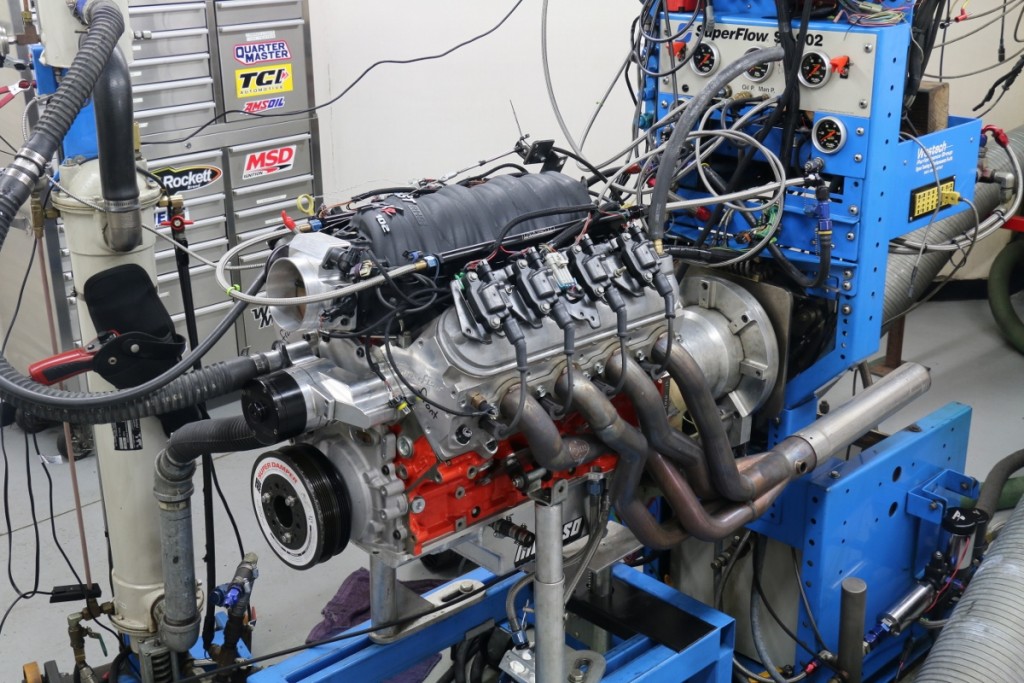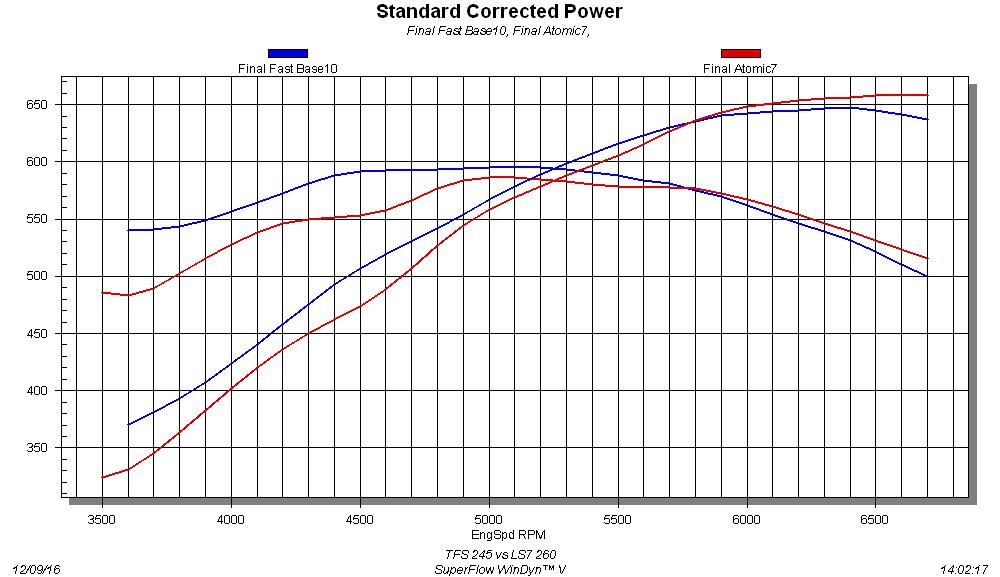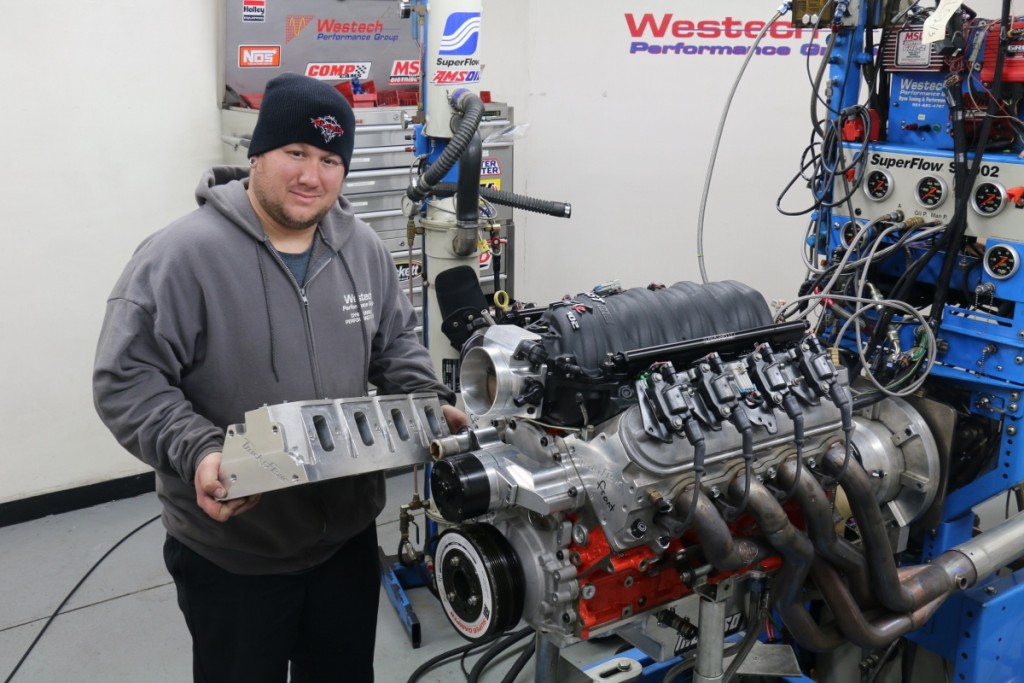Words and Photos By: Richard Holdener
In the hierarchy that is the LS engine family, we all know an LS2 is better than an LS1 and that an LS3 is even better than the LS2. Things start getting confusing when we throw in the LS6, which is really a glorified LS1 and might be slightly better than an LS2, but not better than an LS3. Confused yet? Don’t be. One absolute certainty among LS enthusiasts is that the cream of the crop of normally aspirated motors is the almighty LS7.
Sure, it has displacement in its favor by sporting 427 cubic inches, but what really makes the 7.0L motor shine are the amazing cylinder heads. The factory LS7 offered not only the largest port volumes, but also the highest peak flow rates (remember we said PEAK flow here — it will come up again). The after market offerings seemed to follow suit as the raised, rec-port LS7 heads offer huge flow figures, some eclipsing the 400-cfm mark. We all take it for granted that LS7 heads are the bad boys on the block, but what happens when you actually put that theory to the test?
In order to properly test the LS7 superiority theory, we needed three things: a test motor, a set of suitable LS7 heads, and a pair of cathedral-port heads to compare them to. The idea was to run a back-to-back test with the LS7 and cathedral-port heads on the same motor and let the dyno decide. As luck would have it, Trick Flow Specialties offered CNC-ported versions of both heads.
The Gen X 260 LS7 heads featured 260cc intake ports, 87cc exhaust ports, and 70cc combustion chambers. The Gen X 260 heads were further decked out with a 2.20/1.60 valve combo, a dual-spring package that provided for our .650-lift BTR Stage IV cam, and chambers (and valve spacing) designed for use on big-bore (4.10+) LS applications. The rec-port LS7 heads offered some serious peak flow numbers, checking in with 393 cfm at .700 lift. By contrast, the cathedral-port 245 heads were down on port volume (245cc), intake valve size (2.10-inch) and peak flow (353 cfm at .600 lift), but shared the 70cc chambers to keep compression consistent. The tale of the tape certainly seemed to favor the LS7 heads.
Things got even worse for the Gen X 245 heads when we consider they were designed to run with a 1.7-ratio rocker. The LS7 was blessed with a 1.8-ratio rocker, meaning the BTR Stage IV cam offered .036 more intake lift and .035 more exhaust lift than the cathedral-ports. So not only did the cathedral-port heads featured smaller ports with less flow, they were also handicapped with milder cam timing. Before you throw in the towel, check out the supplied airflow and coefficient of discharge data we generated. On the airflow side, the larger 260cc LS7 heads offered a massive 393 cfm, but did so at .700 lift, well past the peak lift of our cam. Up to .600 lift, the two heads were actually quite comparable. Now, check out the exhaust flow. Use of the larger intake valve on the LS7 heads required a change in exhaust valve location relative to the cathedral-port heads. This reduced exhaust flow enough that the exhaust port on the 245 heads easily outflowed the larger LS7 heads.
When you calculate the coefficient of discharge by dividing the airflow by the valve size (2.10/1.60 for the 245s and 2.20/1.60 for the LS7), the 245s started to look pretty darn impressive. Maybe it will be a good fight after all!
The real key to success of the cylinder heads is actually the intended application. Stick the LS7 heads on a stock 5.3L (we know the bore size is too small) and they would never get to strut their stuff. Run the 245s on a 500-inch, 8,000-rpm race motor and the same thing would happen.
To properly test these two heads, we needed something between these two extremes, so we chose our handy, dandy Magnificent LS7 427. The LSX block was stuffed with a Lunati crank, Carrillo rods, and CP pistons then augmented with the aforementioned BTR Stage IV cam. Additional goodies included a Moroso oiling system ATI Damper and Total Seal rings, along with pushrods, lifters, and an aluminum front cover all supplied by COMP Cams. The 4.125-inch bore offered plenty of room for the big-valve, LS7 heads, but it wasn’t overly large to purposely exclude the 245 heads (though it bears mentioning we have seen the 245 heads exceed 700 hp on a 454 stroker). Both heads were run with a set of Hooker 1 7/8-inch, long tube headers feeding 3-inch collector extensions.
First up on the dyno were the TFS Gen X 260 LS7 heads. The LS7 heads were run with an MSD Atomic intake and 105mm Holley throttle body. After dialing in the air/fuel and timing, the LS7-headed 427 produced peak numbers of 658 hp at 6,600 rpm and 587 lb-ft of torque at 5,000 rpm. Torque production from the 427 exceeded 550 lb-ft from 4,300 rpm to 6,200 rpm.

Run in anger, the 245-headed 427 produced peak numbers of 648 hp at 6,400 rpm and 596 lb-ft of torque at 5,100 rpm. The 245 bettered the larger 260 LS7 heads up to 5,800 rpm, but lost out slightly to the big boys on the top end.
Next up on the dyno were the TFS Gen X 245 heads. Run with a FAST LSXR in the same configuration (air/fuel and timing), the 245s produced 648 hp at 6,400 rpm and 596 lb-ft of torque at 5,100 rpm. Though the cathedral port heads produced peak torque 100 rpm higher than the LS7 heads, they offered substantially more torque through most of the rpm range, up to 5,800 rpm. The torque gains were as high as 50 lb-ft down near 3,500 rpm, but they did lose out to the LS7 heads on the top end.

TFS 245 Cath Port vs TFS 260 LS7
This graph tells an interesting story. First off, the larger LS7 heads produced the most peak power, 658 hp compared to 648 hp for the cathedral-port 245 heads. If we look elsewhere along the graph (anywhere below 5,800 rpm, in fact), the cathedral-port heads offered substantially more power and torque. Torque production was up by as much as 50 lb-ft over the LS7 heads. This test actually says less about the heads than it does the need to apply them to the proper engine combination. The LS7 heads belong on a large-displacement, high-rpm combination, but don’t’ count out the cathedral port heads, as we have seen them eclipse the 700-hp mark on a larger 454 (even though the author told Brian Tooley they would never make that much!).
From 5,900 rpm on up, the LS7 heads offered more power, as much as 20 hp at 6,700 rpm. We suspect some of the difference could come from an increase in rocker ratio to get back the missing lift, but it looks like in the LS family feud, LS7 heads are still the big brother.
Flow Data: TFS 245 vs TFS 260 LS7 (supplied by TFS)
245 260 Coefficient of Discharge (flow/valve diameter)
In Ex In Ex In 245/260 Ex 245/260
.100 69 56 71 58 32.8/32.2 26.6/26.3
.200 146 130 148 113 69.5/67.2 61.9/51.3
.300 237 201 233 168 112.8/105.9 95.7/76.3
.400 294 249 296 212 140.0/134.5 118.5/96.5
.500 336 269 340 237 160.0/154.5 128.0/107.7
.550 348 273 na na 165.7/na 130.0/ na
.600 353 276 375 249 168.0/170.4 131.4/113.1
.700 na na 393 254 na/178.6 na/115.4
Sources: ATI, Atiracing.com; ARP, Arp-bolts.com; Brian Tooley Racing, Briantooleyracing.com; COMP Cams, compcams.com; CP Pistons/Carillo Rods, Cp-carillo.com; FAST, fuelairspark.com; Gandrud Chevrolet, [email protected]; Holley/Hooker/NOS, holley.com; Lunati, Lunatipower.com; Moroso, Moroso.com; MSD, Msdignition.com; Trick Flow Specialties, trickflow.com

















